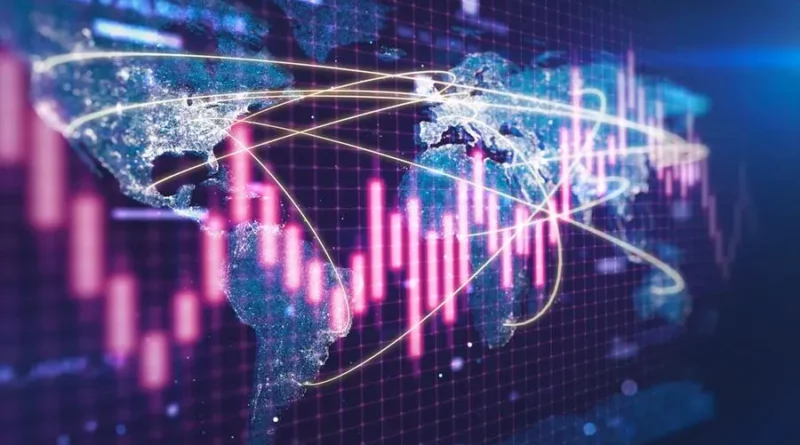CBAM, how the European carbon tax works and why it serves to deindustrialize the EU
The European Union's Carbon Border Adjustment Mechanism (CBAM) pricing mechanism aims to integrate climate action with trade regulations, but the approach is not without potential repercussions.
On 1 October 2023, the first transitional phase of the CBAM came into force.
At the moment, it will only apply to certain goods: cement, iron and steel, aluminium, fertilisers, electricity and hydrogen.
By 2026, its scope is expected to expand, covering more than 50% of emissions from sectors included in the EU Emissions Trading System (ETS).
The logic underlying the CBAM is closely linked to the ETS.
Under this scheme, sectors such as aluminum production must purchase permits for their carbon dioxide emissions.
The cost of these credits, known as Emissions Allocation Units (EUAs), reached an all-time high of over 100 euros per metric ton in February 2023, stabilizing around 85 euros by November 2023.
As a result, an aluminum producer with based in the EU would pay around 85 euros for each tonne of CO2 emitted during production.
However, this cost dynamic changes when aluminum is imported from off the block.
In such cases, foreign producers do not bear similar emissions-related costs, making their aluminum cheaper in the EU market.
To counter this risk, the CBAM imposes a tariff on imported aluminium, effectively balancing the cost discrepancy between the EU's internal carbon calibration and lower or no carbon costs in the country of origin of the aluminium.
Imported aluminum becomes more expensive, reducing its cost advantage over aluminum produced in Europe.
This approach is aimed at discouraging carbon leakage by reducing the attractiveness of importing cheaper goods produced abroad, according to the EU's strategic perspective.
The true cost of CBAM First, the competitive disadvantage of European manufacturers is the direct result of a political decision.
The ETS inherently puts them at a disadvantage in the global market.
To remedy this, sectors particularly vulnerable to international competition could be exempted from the ETS.
Alternatively, implementing internal policies that incentivize these industries to improve energy efficiency could be a viable solution.
The economically sensible response to a burden deliberately created by domestic policies cannot be to extend this burden to all non-domestic market participants, leading to an even greater loss of welfare.
The CBAM is essentially a protectionist measure.
It is unrealistic for the EU to expect an increase in industrial competitiveness while simultaneously limiting competition.
Even as a climate policy tool, CBAM is poorly designed.
Currently, the revenues generated by the mechanism are absorbed into the general EU budget.
If the main objective of the CBAM was truly to mitigate emissions, one would expect these funds to be directed towards environmental initiatives in exporting countries.
However, this is not the case.
Loss of welfare The EU aims to reduce the production of goods such as aluminum or cement.
This reduction is achieved through ETS and CBAM, which reduce production levels while increasing costs.
These higher prices ripple through the economy until they reach the consumer, who pays more for less – and when competition is poor, quality also declines.
Furthermore, CBAM triggers another form of well-being loss.
By distorting economic incentives, the mechanism will lead to rent-seeking – when companies divert money from the production process to gain political influence.
This behavior distorts the market process and leads to an overall decrease in well-being.
This loss of well-being is already a reality.
Importers in the EU are facing more bureaucracy and higher prices for CBAM certificates.
Meanwhile, several industrial sectors in the bloc have stepped up their lobbying: they want even higher taxes on imports and some of the money raised from these taxes returned to them.
The role of CBAM The mechanism unintentionally pushes companies to focus on products that include carbon costs in their production process, but which are not covered by CBAM.
Due to the setup of the CBAM, importers are encouraged to introduce finished products that do not fall under the mechanism, rather than intermediate goods that do.
For example, a car manufacturer that pays import duty for aluminum may find it cheaper to produce the entire car overseas and import it without having to pay CBAM fees.
An aluminum factory could reduce its carbon footprint simply by switching from generating its own energy to using electricity from the grid, even if it comes from a coal-fired power plant.
This is because, in sectors such as aluminium, the CBAM currently only considers direct emissions.
Scenarios The CBAM will most likely be extended to cover around 50% of the ETS industries and include both direct and indirect emissions.
On the one hand, this will calculate emissions more accurately, but on the other, it will accelerate carbon leakage and substitution through imports.
In this scenario, countries exporting to the EU will react by introducing new tariffs or demanding compensation payments from the bloc.
In such cases, there is a larger welfare loss on the European side and little or no climate benefit.
The result is further deindustrialisation of the EU, a reduction in the quality of life for Europeans, lost business opportunities for industries and the escalation of global trade frictions.
Two additional partially overlapping scenarios may occur.
A very likely event is that some jurisdictions will follow the EU.
Canada, the United States and the European Free Trade Association have expressed their interest.
Even the World Bank Group and the World Trade Organization (WTO) are considering scenarios where developed countries introduce CBAM.
This would mean a reduction in global trade activities and welfare losses for all countries involved.
At the same time, developing countries react against the EU by introducing CBAM themselves, or block international negotiations on climate or trade with demands for financial compensation.
This increases welfare losses for the EU and worsens geopolitical tensions.
Global trade could move south to bypass the EU.
read also Why will 2024 be the year of small caps?

